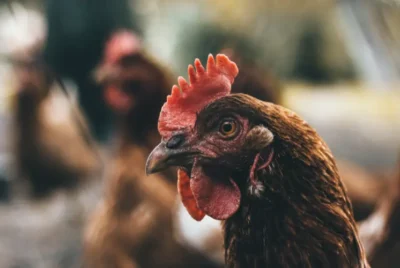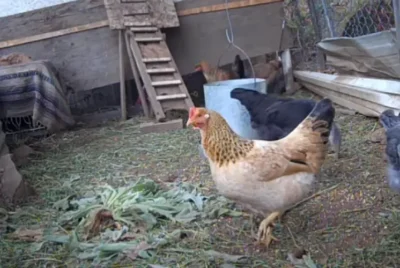Pearl Star Leghorn: The Ultimate Guide to This Unique Breed
Have you ever found yourself entranced by the sheer beauty and uniqueness of the Pearl Star Leghorn, only to feel overwhelmed by the scarcity of comprehensive information? Maybe you’ve considered adding this breed to your flock but hesitated, fearing their distinct characteristics might demand special care or resources. You’re not alone.
Many poultry enthusiasts share the same concerns, searching high and low for a detailed guide on this distinctive breed. That’s precisely why I’ve compiled this ultimate guide to ensure that you’re fully equipped with the knowledge to raise them confidently and effectively.
Table of Contents
Quick Stats
- Breed Type: Cross-breed
- APA Class: Not Recognized
- Weight: Roosters: 5-6 lbs, Hens: 4.5-5.5 lbs
- Egg Production: 220-300 eggs annually
- Average Production Age: 22-24 weeks
- Egg Shell Color: Cream-white
- Egg Size: Large
- Temperament: Active but easy to handle
- Hardiness: Cold-hardy, tolerant of mildly warm climates
- Broodiness: Very rarely broody
- Comb: Single
Breed History
The Townline’s Pearl Star Leghorns come from the Czech Republic and are special because of their mix of Partridge Rocks and Sussex chickens. This mix makes them good at laying big cream-white eggs and gives them beautiful feathers with many colors.
People who raise chickens like them a lot because they lay eggs well and look pretty in the flock. Their parents, the Partridge Rocks and Sussex are also known for being great chickens, which makes the Pearl Stars even more special.
Physical Appearance of Pearl Star Leghorn
Size and Weight
When I observe the Pearl Star Leghorns in my flock, it’s evident that there’s a noticeable difference between the males and females. The robust and sturdy roosters generally tip the scales between 5-6 lbs. In contrast, while still well-built, the hens are slightly lighter, weighing in at around 4.5-5.5 lbs.
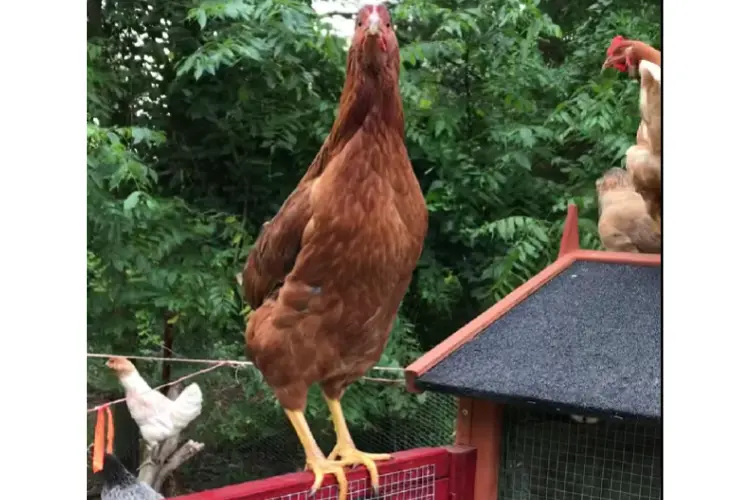
Feather Color
When Pearl Star Leghorn chicks are born, the hens are warm, rusty red with dark brown stripes on their backs, while the roosters are striking bright yellow with dark stripes.
As they grow up, the hens’ feathers turn a deep russet-red, with even darker red on their tails, which are tipped in black. The rooster, on the other hand, transforms into a vivid mix of colors. Their feathers show off a range of shades from cream to dark red, dotted with white and black spots, and their tails even have a hint of green.
Personality of Pearl Star Leghorn
Pearl Stars are active birds, always curious and exploring around. But they’re not as jumpy or restless as other chickens, like the Pearl White Leghorns, the best white egg layer. They’re friendly and calm, but they also like to stay busy. They’re perfectly suited for free-range or pasture use. I’ve observed that this breed is impressively hardy, taking both cold and hot weather.
Plus, they don’t get the urge to hatch eggs (broodiness), so they keep laying eggs regularly.
Noise Level
Pearl Star Leghorns, like other chicken breeds, can be vocal, but their noise levels are moderate. They’ll cluck and chat and occasionally have louder moments, especially after laying an egg (known as the “egg song”). However, they are generally not as loud as some other breeds.
Hens are usually quieter than roosters. A rooster’s crow can be loud and is often the primary noise concern for many chicken keepers. If chicken noise is a significant concern, it might be best to keep only hens.
Pearl Star Leghorn Egg Color and Production
Pearl Stars lay cream-white eggs that are really pretty and light. They’re amazing at laying eggs, giving around 220 to 300 big eggs each year. Plus, they start laying eggs when they’re about 5 to 6 months old. So, if you have these chickens, you’ll get lots of nice eggs pretty quickly.
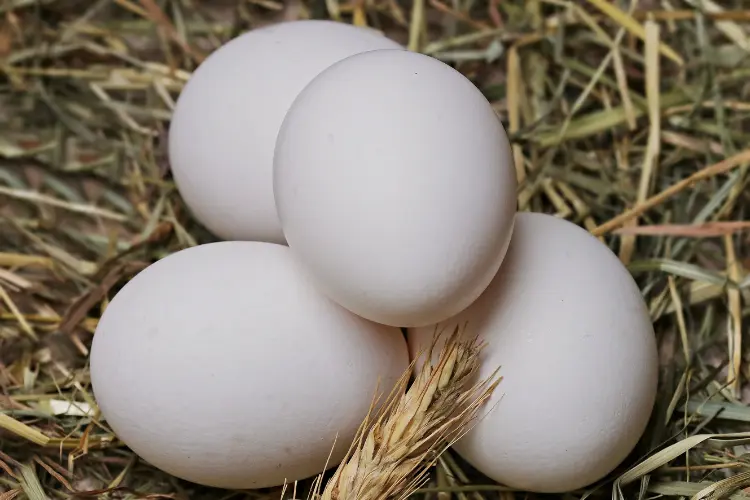
Pearl Star Leghorn Care Guide
Health Issues
These chickens are generally hardy birds, but like all chickens, they can be prone to common poultry diseases. I advise regular checks for signs of illness, parasites (like mites and lice), and maintaining a clean environment can help prevent many issues.
- Ensure they’re vaccinated against common poultry diseases.
- Regularly deworm your flock.
- Check for and treat mites and lice as needed.
Feeding
They are active birds and you must provide a well-balanced diet for their health and egg production.
- Start with a high-quality chick starter feed. You can check your local feed store.
- Transition to a layer feed when they begin to lay eggs. This provides the necessary calcium for strong eggshells.
- Offer occasional treats like fruits, vegetables, and mealworms, but ensure treats don’t exceed 10% of their diet.
- Always provide clean, fresh water.
Coop Setup
You should build a safe, secure, and clean coop setup for the health and happiness of your Pearl Star Leghorns.
- Aim for 2-3 square feet per bird inside the coop.
- Ensure good ventilation to keep the air fresh and prevent respiratory issues.
- Provide one nesting box for every 3-4 hens.
- Offer sufficient perching space for all birds to roost comfortably at night.
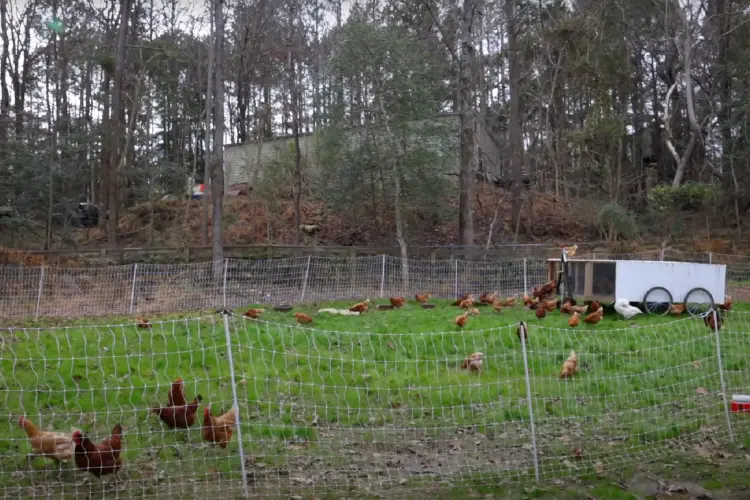
Run and Roaming
These chicken breeds enjoy roaming and are well-suited for free-range or pasture environments.
- If confined to a run, you must provide a minimum of 8-10 square feet per bird.
- Ensure the run is predator-proof with secure fencing.
- Offer areas for dust baths, which help chickens keep parasites at bay and maintain feather health.
- If you allow free-ranging, I recommend supervising them to protect them from predators and ensure they return to the coop in the evening.
My Journey with Pearl Star Leghorn
Having Pearl Star Leghorn chickens has been an incredible experience. Their beautiful cream-white eggs and their striking appearance make them a standout in my backyard.
They’re not just a joy to look at; their ability to lay a generous amount of eggs makes them incredibly useful, too. If you’re considering adding a chicken breed that is both beautiful and productive to your flock, I can personally vouch for the Pearl Stars.
Of course, they, like any pet, require love and proper care to thrive. They’ve been a perfect example of the wonderful diversity and joy that chicken raising can bring into your life.


